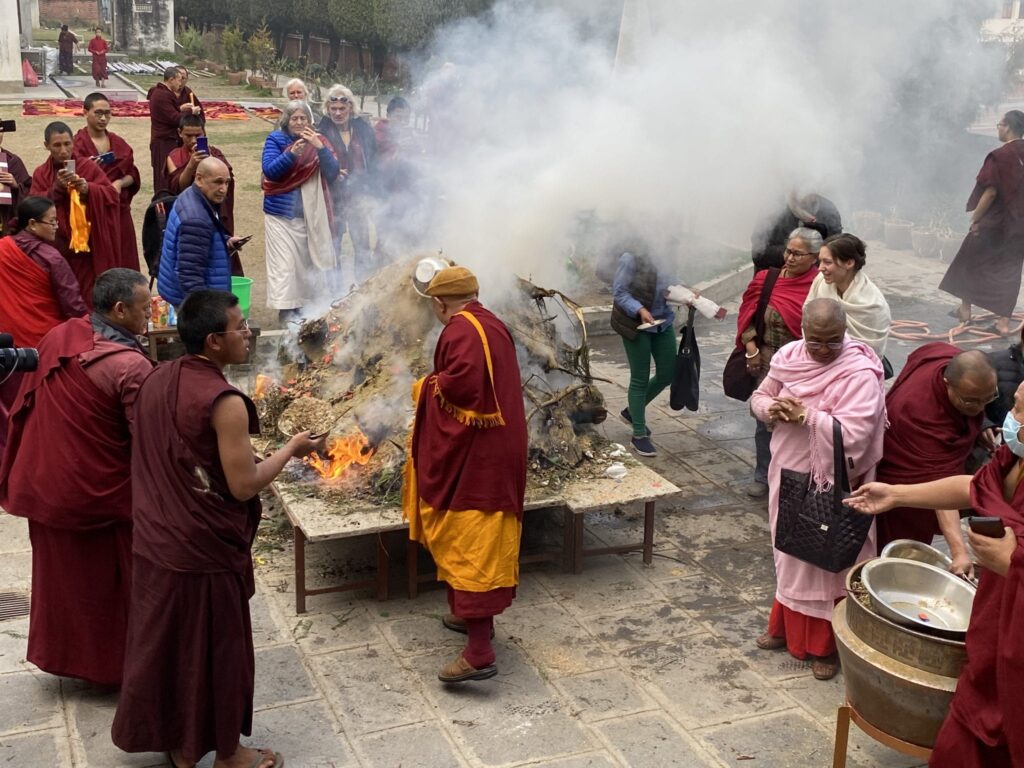
The last annual offering before Losar was a sang puja based on a text from the Tukdrub Barché Künsel cycle[1]. For this puja, the ritual masters gathered all the necessary ingredients for the offering, including different types of incense, woods, precious stones, brocades, butter, milk, and several other substances mentioned in the text. These ingredients were mixed in big containers and then consecrated in the first part of the puja. After the consecration, the monks prepared a large metal base into which all the ingredients were slowly added and burned while we recited the text.
Sang: Skillful Generosity
Just as the smoke filled the air, we visualized all types of offerings pervading the space and pleasing each and every one of the deities and sentient beings, including those who created difficulties. This is a skillful means to practice generosity.
Removing Obstacles

In addition to practicing generosity, the sang offering has another purpose. In Tibetan, sang means removing all the veils and obstructions in the minds of sentient beings so that all the obstacles are dispelled and good conditions are gathered. Therefore, the sang offering is not a just smoke offering, as commonly believed Rather, itis a very profound and beneficial Vajrayana practice.
Following the sang offering, we made offerings to the protectors. As we recited the text, the ritual masters presented and offered food and drink to please the protectors and to remind them of their oath to protect the Vajrayana teachings and the practitioners. At the end of this offering, a group of monks lined up with various colorful torma offerings. Then Chökyi Nyima Rinpoche, who presided over the ceremony, waved the victory banner while we all chanted a melodious song.
Purification, Aspiration and Dedication
And finally, during the last part of the ritual, all of the participants went outside of the temple and threw a handful of mixed offerings to the main burning pile to “purify” ourselves. We circumambulated three times, during which we made aspirations that all beings would benefit from this meritorious offering and would enjoy all the best conditions for their practice and their lives.
[1] The text is called dngos grub rgya mthso’I cha lag bsang brngan ‘dod dgu’i rgya mtsho.
All photos courtesy of Xavier Puigdevall.







